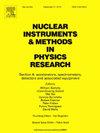Preliminary experiment study of hardware time stamp method based on event timing system
IF 1.5
3区 物理与天体物理
Q3 INSTRUMENTS & INSTRUMENTATION
Nuclear Instruments & Methods in Physics Research Section A-accelerators Spectrometers Detectors and Associated Equipment
Pub Date : 2025-02-11
DOI:10.1016/j.nima.2025.170301
引用次数: 0
Abstract
The rapid advancement of free-electron laser (FEL) technology to its fourth generation introduces significant challenges in data acquisition and alignment due to high repetition frequency beams reaching up to 1 MHz (Huang et al., 2021). Traditional software-based synchronization methods, such as Network Time Protocol (NTP), fail to provide the required timestamp accuracy under these conditions. Furthermore, the White Rabbit system, though has many advanced factors, also has limitations such as relatively high hardware requirements and inflexible master clock frequency, making it suboptimal for FEL projects.
This paper presents a novel hardware timestamp scheme based on an event timing system, widely used in large scientific facilities, which simplifies wiring complexity and reduces hardware demands at the receiver end. This scheme has been successfully implemented on the DC GUN equipment at Dalian, China, and tested under 1 MHz beam current conditions. The results demonstrate that the proposed solution can provide stable and accurate timestamps with a precision of up to 10 ns.
Our scheme's compatibility with existing event timing systems ensures ease of integration and modification, facilitating enhanced data accuracy and utilization in applications such as fast track feedback and AI-driven auto-beam tuning. This design promises significant improvements in the precision and efficiency of data alignment in high-frequency beam environments.
自由电子激光器(FEL)技术迅速发展到第四代,由于重复频率高达 1 MHz(Huang 等人,2021 年),给数据采集和对准带来了巨大挑战。传统的基于软件的同步方法,如网络时间协议(NTP),在这些条件下无法提供所需的时间戳精度。此外,"白兔 "系统虽然有许多先进因素,但也存在硬件要求相对较高、主时钟频率不灵活等局限性,使其成为 FEL 项目的次优选择。本文介绍了一种基于事件定时系统的新型硬件时间戳方案,该方案广泛应用于大型科学设施,简化了布线复杂性,降低了接收端的硬件要求。该方案已在中国大连的 DC GUN 设备上成功实施,并在 1 MHz 束流条件下进行了测试。我们的方案与现有的事件授时系统兼容,确保了集成和修改的简便性,有利于提高数据的准确性,并在快速轨道反馈和人工智能驱动的自动波束调谐等应用中加以利用。这种设计有望显著提高高频波束环境中数据对准的精度和效率。
本文章由计算机程序翻译,如有差异,请以英文原文为准。
求助全文
约1分钟内获得全文
求助全文
来源期刊
CiteScore
3.20
自引率
21.40%
发文量
787
审稿时长
1 months
期刊介绍:
Section A of Nuclear Instruments and Methods in Physics Research publishes papers on design, manufacturing and performance of scientific instruments with an emphasis on large scale facilities. This includes the development of particle accelerators, ion sources, beam transport systems and target arrangements as well as the use of secondary phenomena such as synchrotron radiation and free electron lasers. It also includes all types of instrumentation for the detection and spectrometry of radiations from high energy processes and nuclear decays, as well as instrumentation for experiments at nuclear reactors. Specialized electronics for nuclear and other types of spectrometry as well as computerization of measurements and control systems in this area also find their place in the A section.
Theoretical as well as experimental papers are accepted.

 求助内容:
求助内容: 应助结果提醒方式:
应助结果提醒方式:


